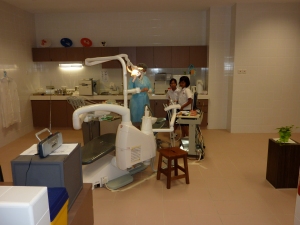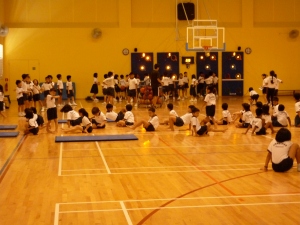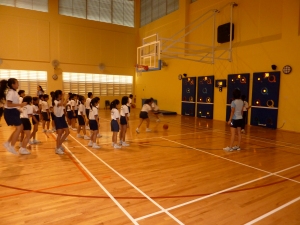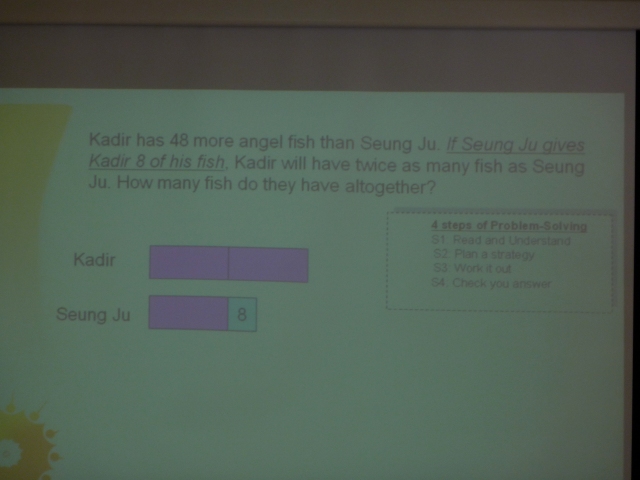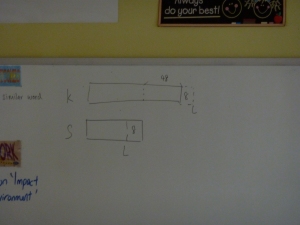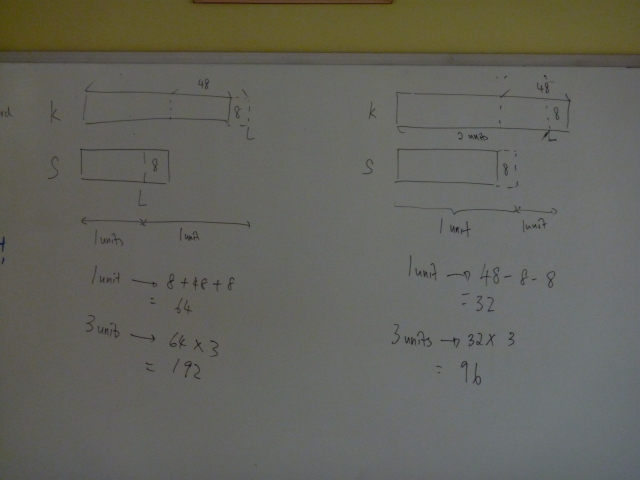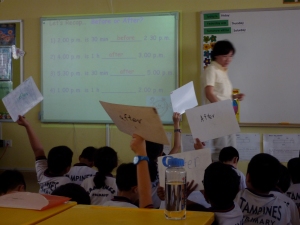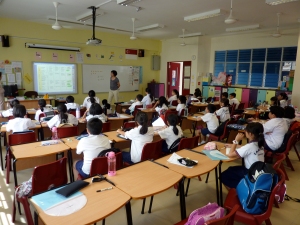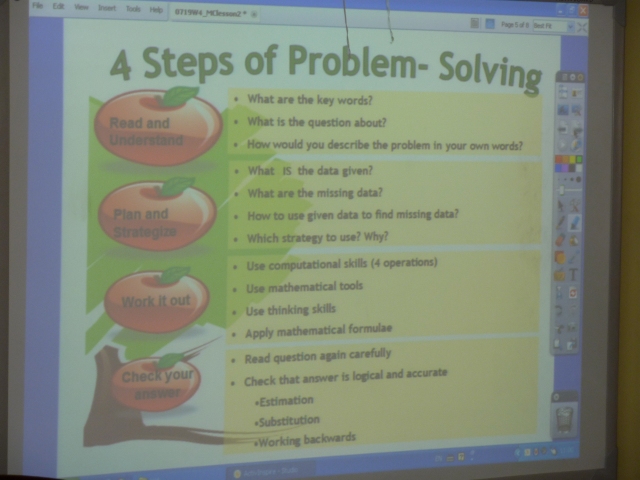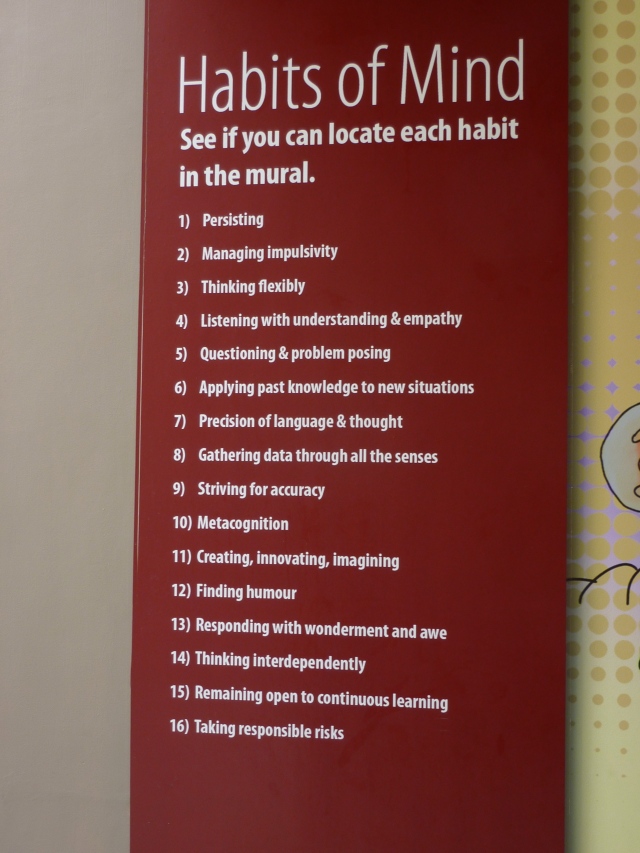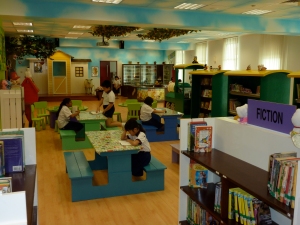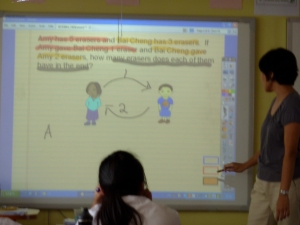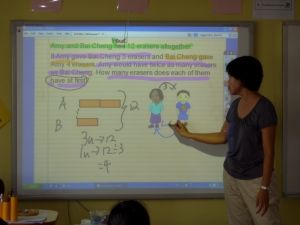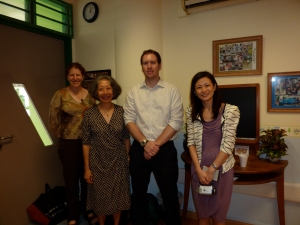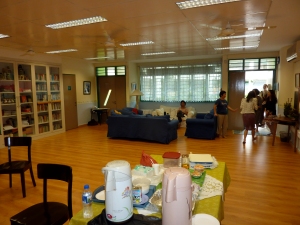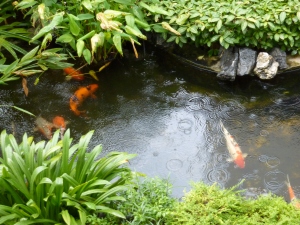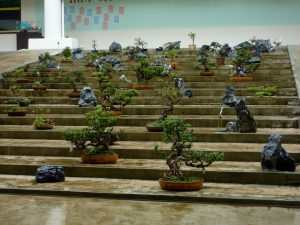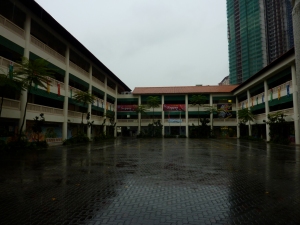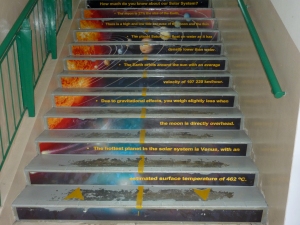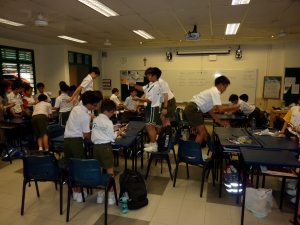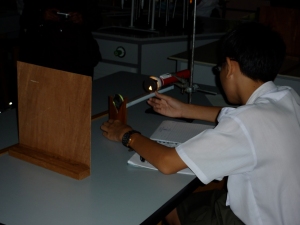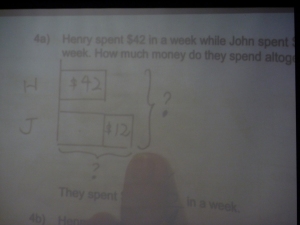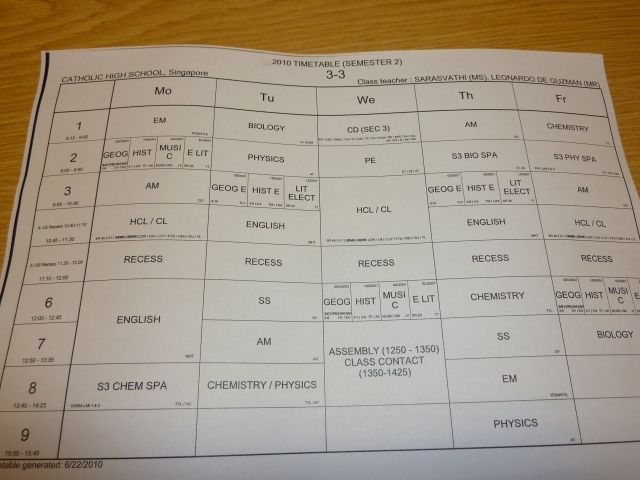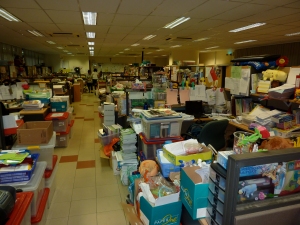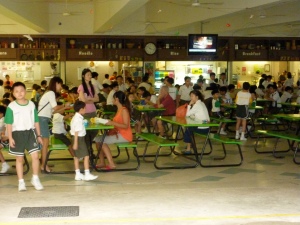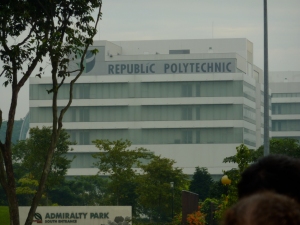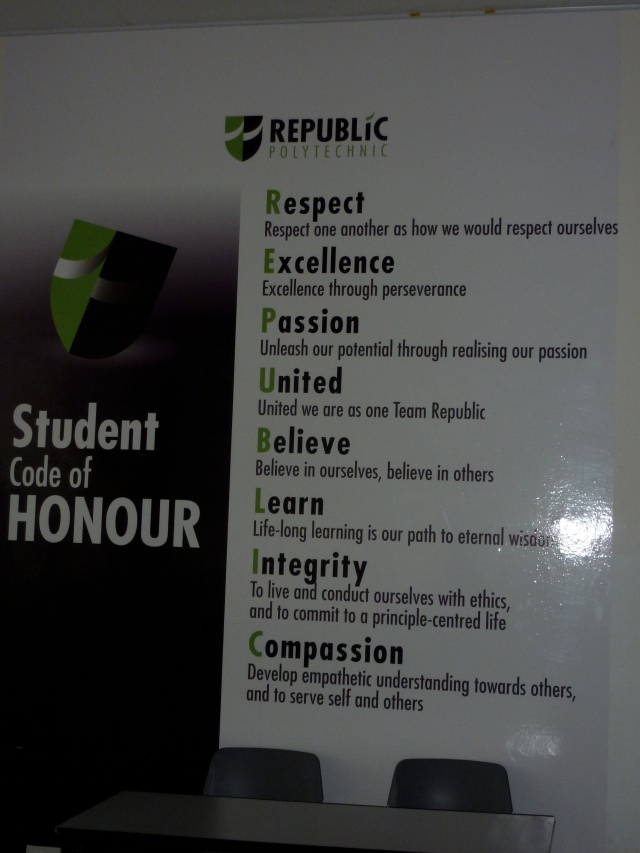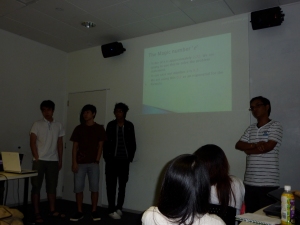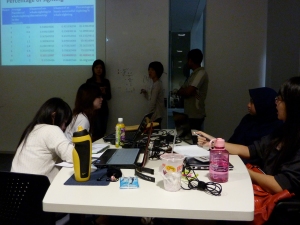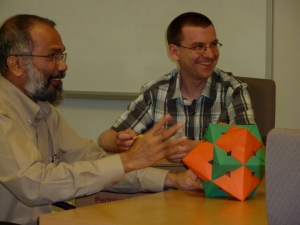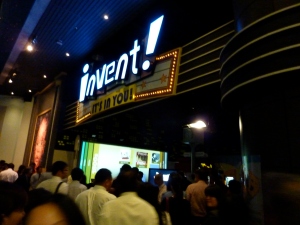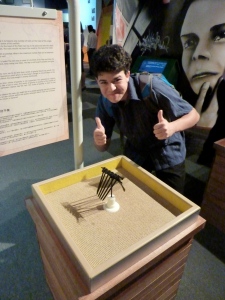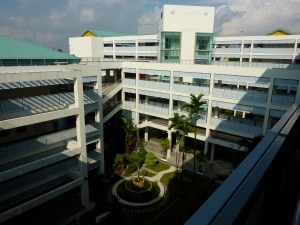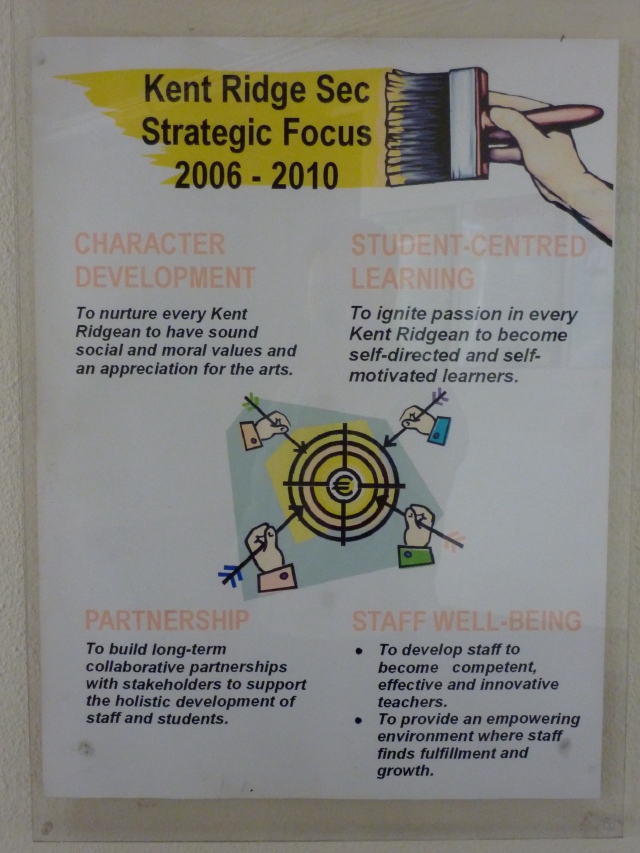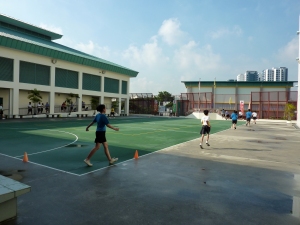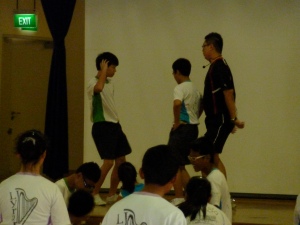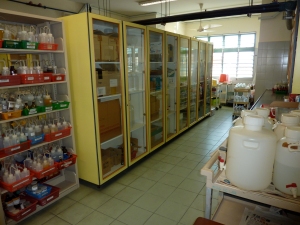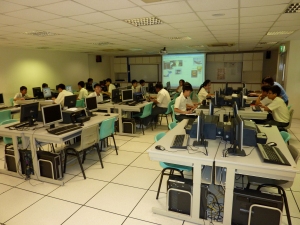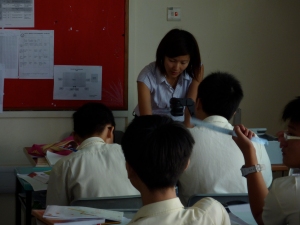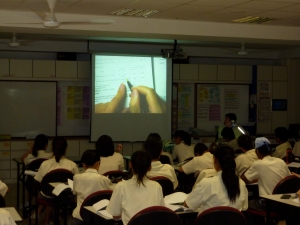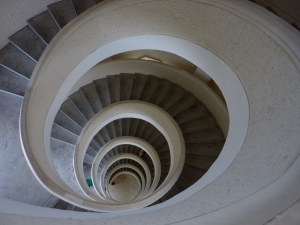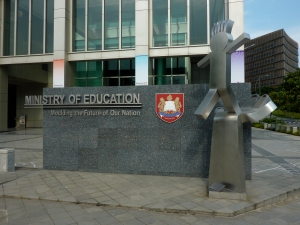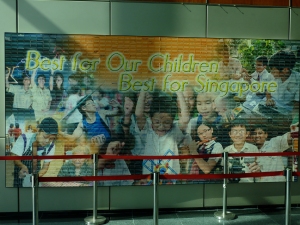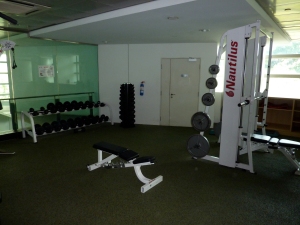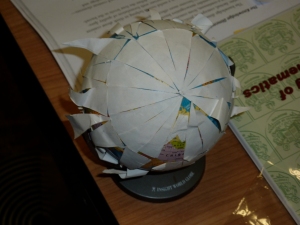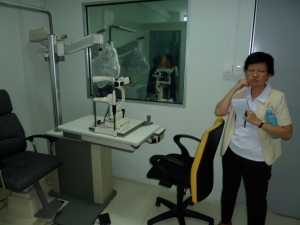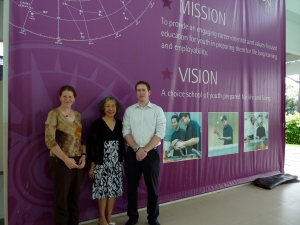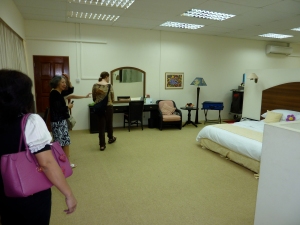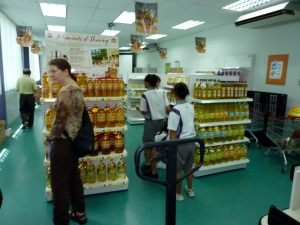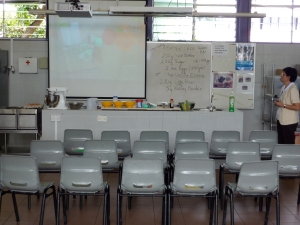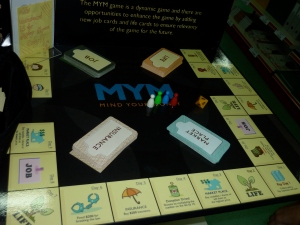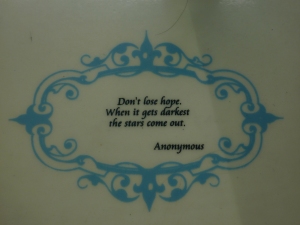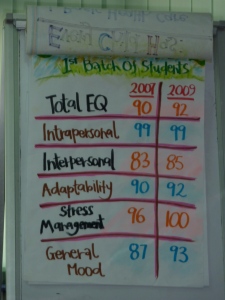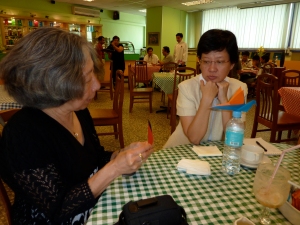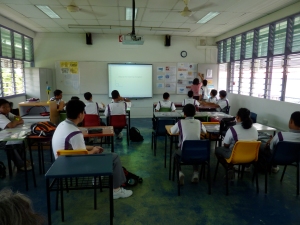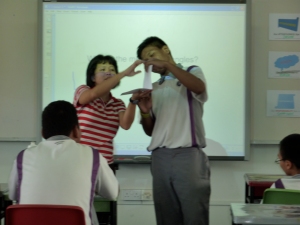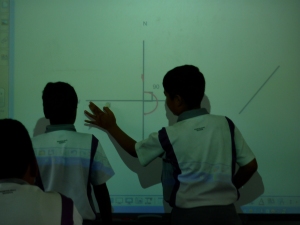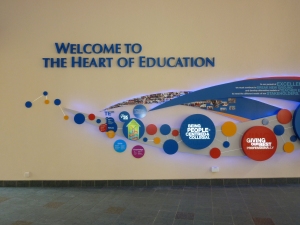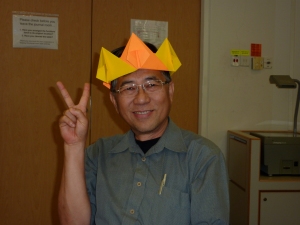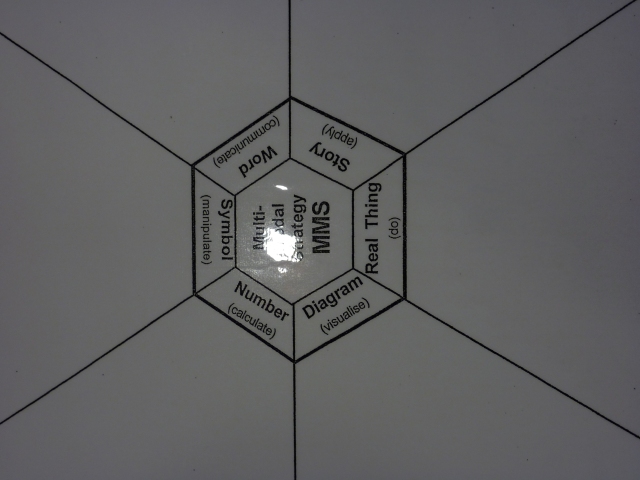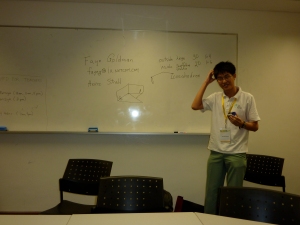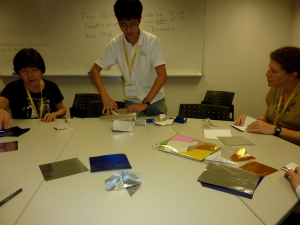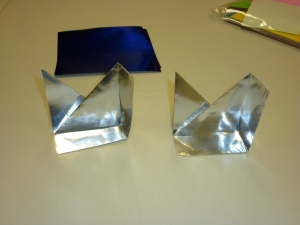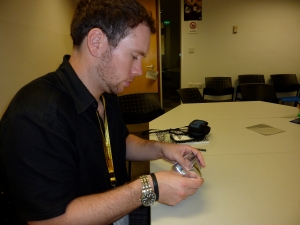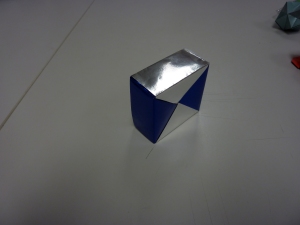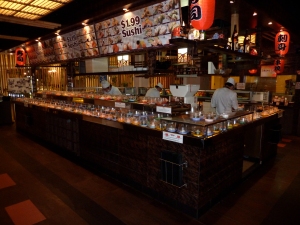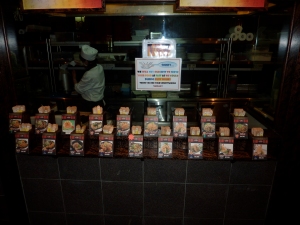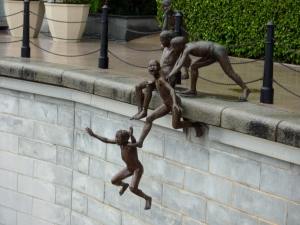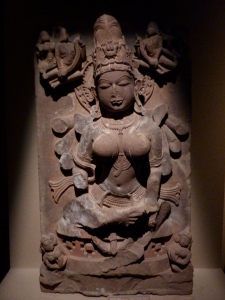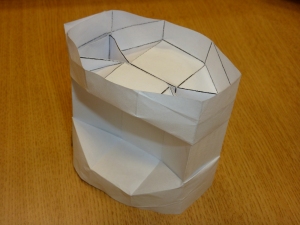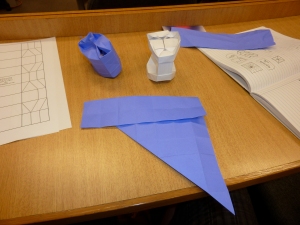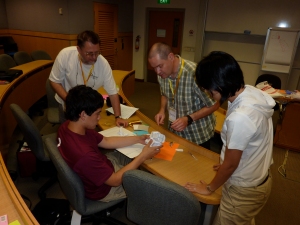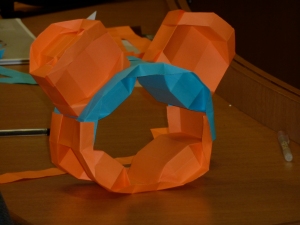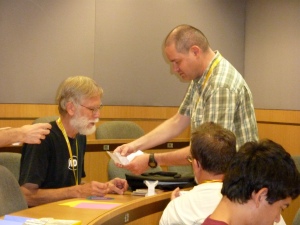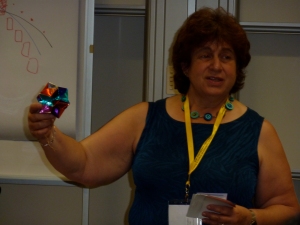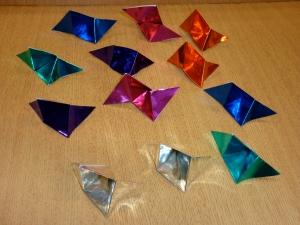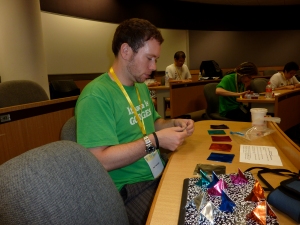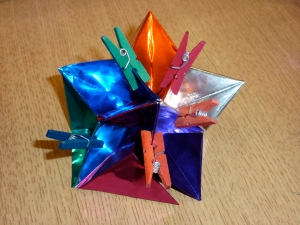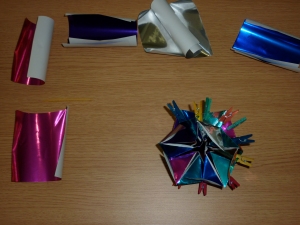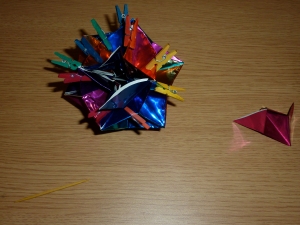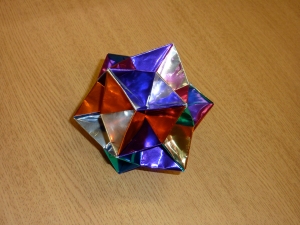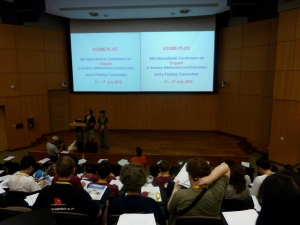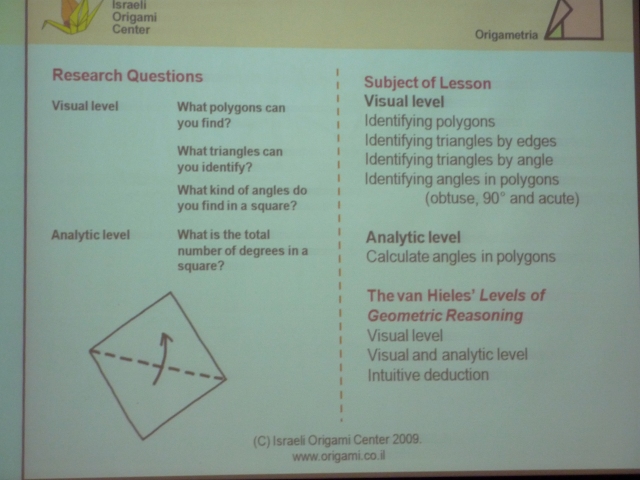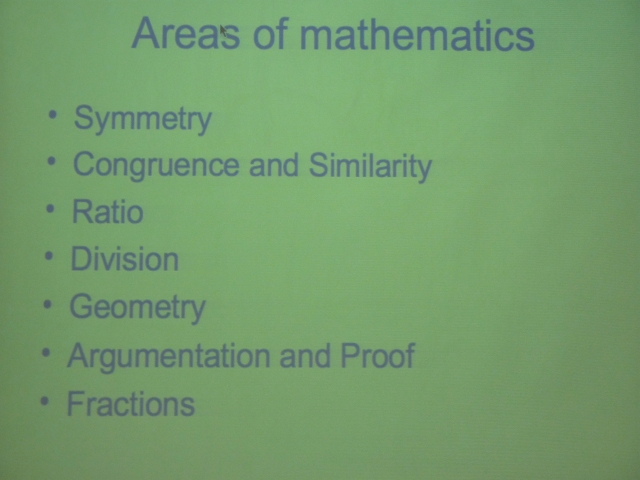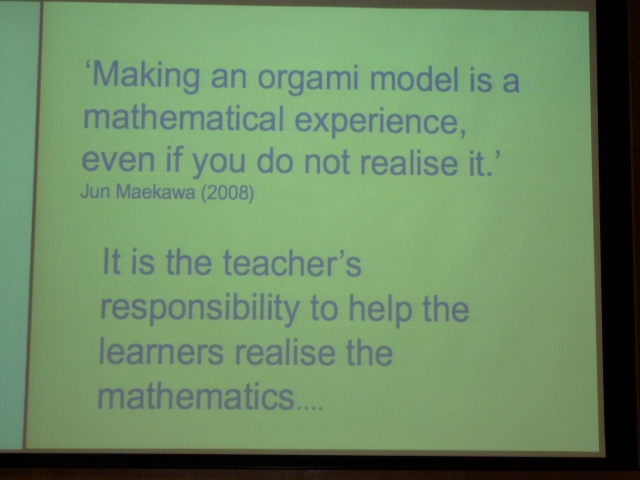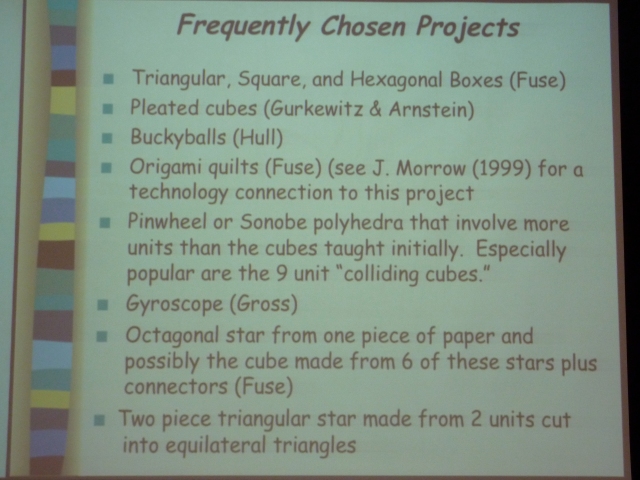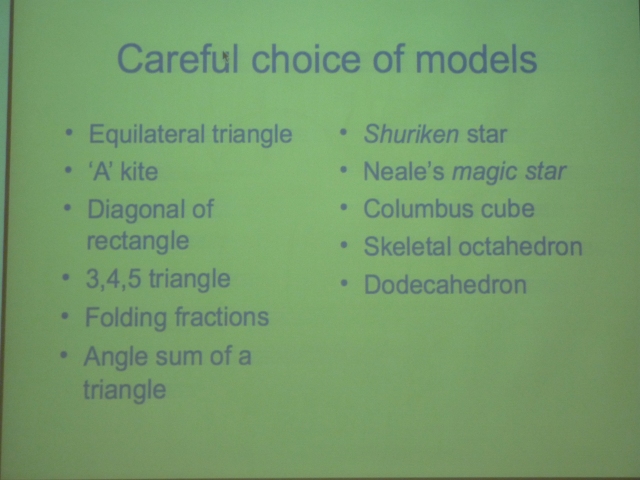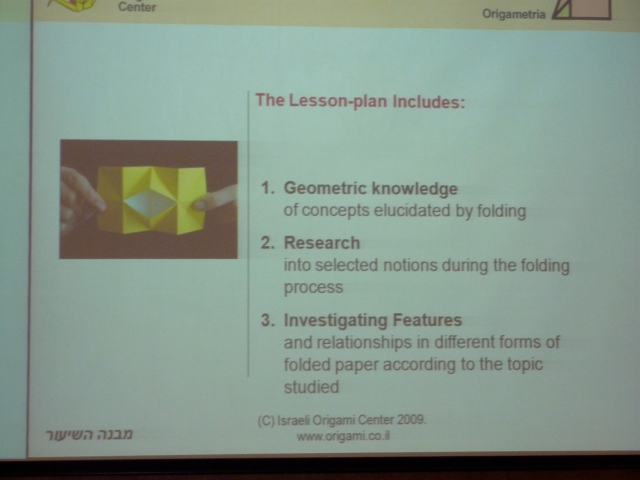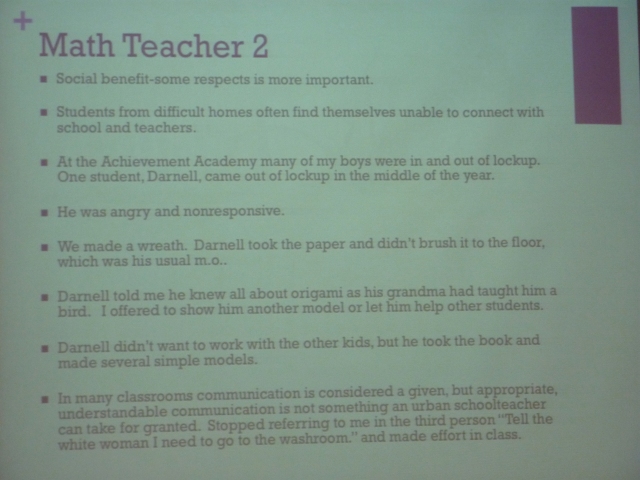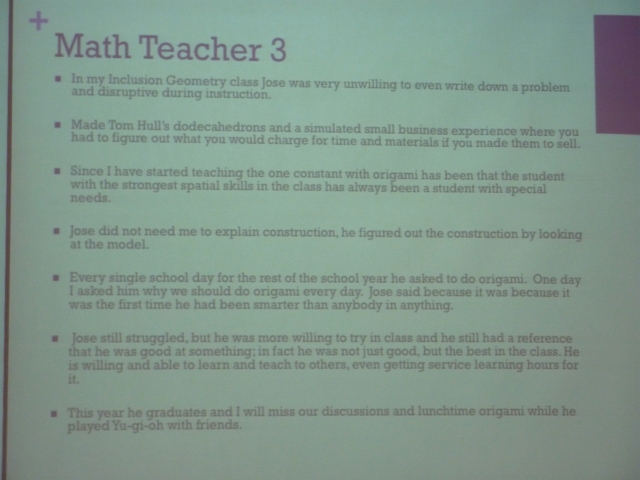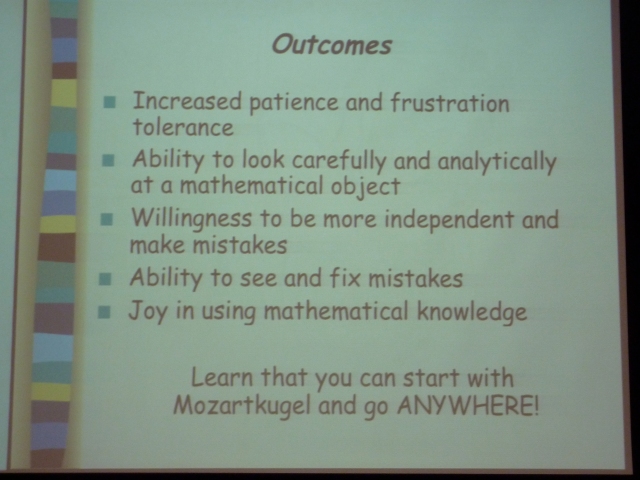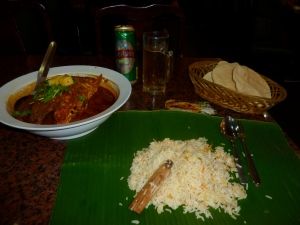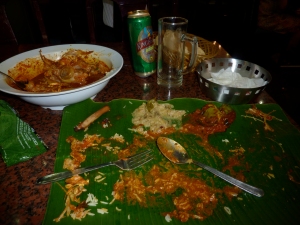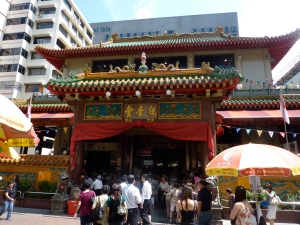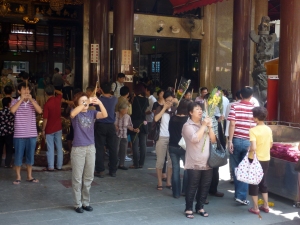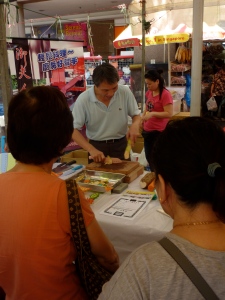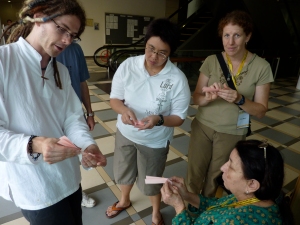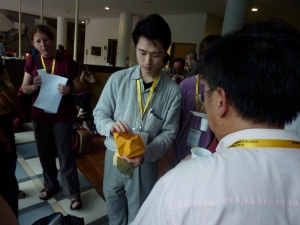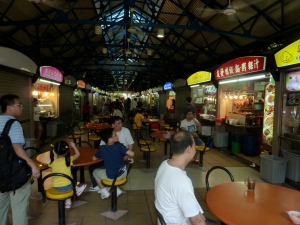Today we visited Tampines Primary School in the Tampines area of Singapore near the airport in the southeast part of the island. It took about 40 minutes to get there by train. The building is completely new and beautiful. In Singapore, you will be hard-pressed to find a school built before 1990 because the government believes in leveling old buildings and constructing new ones every 20 years. As a result, many of the school buildings we visited were built recently, and the technology and variety of services offered at each school blew me away. For example, all Primary schools have a dentist’s office (we visited the one at Tampines and saw two students about to see the dentist),
and we toured the new gym at Tampines and saw three separate gym classes of 30 students each with plenty of space to stretch and play a game involving dribbling basketballs and passing them to lit points on a $30,000 electronic game board.
I’m not sure if that game board was the best investment, but the school also has state-of-the-art technology in each classroom.
We were greeted by the gracious principal and given gift bags and served a delicious breakfast of a chicken curry over naan-like flat pancakes. She told us that when schools are rebuilt from the ground up, the students and staff at the school relocate to a building for a little more than a year while their old building is razed and rebuilt. I was amazed to hear that construction on the new Tampines complex (Tampines Primary is located adjacent to Tampines Secondary, but they each have separate spaces, including separate gyms) took only 15 months to complete. Everything in Singapore seems to be done as efficiently as possible (but we were told that the building crew worked 24-7 on the project — something that would not happen in Boston), and building schools is no exception.
We visited many classes today at Tampines, and just like at all of the other classrooms we visited this week, whenever we entered a class, all of the students stood up to greet the principal and guests. Very cute and courteous. Since we visited Primary school (grades 1-6) classrooms today, we saw many teachers instructing using the model method that is a cornerstone of the Singapore math approach and a way to deconstruct word problems.
As part of the method, for example, if the question said that Paul had 10 dollars and John had six dollars more, a Singaporean student would start to problem solve visually by drawing a small square to represent Paul’s money and then a slightly larger rectangle to represent John’s money. At the point where the two shapes were congruent would be a dotted line on the rectangle, representing where Paul and John’s money was equal, and then a student would write a six to the right of this dotted line showing how much more money John had than Paul. This is obviously the most basic of examples of word problem modeling, but we also saw teacher’s model this method with more difficult problems involving algebra on Smartboards (some teacher’s ease of use and mastery of the Smartboard is something I had never witnessed before, and this is what happens when technology is readily available in every classroom).
In Singapore, since there is uniform technology, a uniform vertically-aligned curriculum, and uniform problem solving strategies, both teachers and students know what to expect and what is expected of them. In most of the classes at Tampines students had individual white boards and small erasers, which some classes have at my school (including mine) have, and the students were writing the answers to short answer questions on them and the teachers were getting instant feedback on their lessons.
One thing I was curious about since some of the classes we visited had nearly 40 students was what happens to the quite students in the back who are physically present for lessons but who may be struggling with the content.
I learned that teachers use after-school time to work with these students, which is what happens at my school as well. One lesson we observed today involved a second grade class talking about how many hours pass between two times and also what time it will be after a certain amount of time lapses. I liked how the teacher broke the simplistic problems down into their most basic form and solved each part in multiple ways using multiple representations. Teachers in Singapore do a fantastic job of clearly and explicitly teaching each step needed to solve a problem and showing alternate ways to solve the problem. Because they are explicitly teaching problem solving strategies to students at such a young age, students have much less difficulty in later years when presented with more challenging problems because they have established strategies to break them down and solve them.
Also, I am not sure that teachers in Boston are teaching how to read a clock effectively enough, because every year I have students who cannot tell time (not knowing the difference between 1:25 and 5:05, for example) reliably when I use clocks to talk about angle measures.
Tampines is the first community school in Singapore, which means that on the weekends, the hallways are blocked off so people cannot enter classrooms, but people from the community can use the facilities at Tampines. Boston has schools like this as well where local residents can use the gym or swimming pool of a school.
I was extremely impressed by the library at Tampines.
It had a mock peach tree, a train carrying books, and it had reading materials for students who speak all of the major languages of Singapore (English is the official language, but most people do not speak English at home). What struck me about the library was the group of model students (or at least I thought they were) browsing the shelves for books, helping the librarian check out their books, and then sitting quietly at tables reading. I was floored by this. These were probably third grade students.
The principal told us that teachers went to Malacca, a resort beach area in Malaysia for a recent professional development retreat –wow.
Perhaps the class I was most impressed with was the fourth grade class in which the teacher modeled how to use the mounted Smartboard to model solving word problems using model drawing.
She was so skilled with the Smartboard, modeling the important step of reading the question carefully and highlighting the key information (she ended up highlighting nearly every word in different colors, reducing each word’s importance in my mind, but the fact that she explicitly modeled highlighting in such a visual way was powerful). The teacher asked good questions of the students to keep them leading the lesson such as, “OK, so what do we need to do first,” and “Visually, we must understand what is happening here.” The teacher showed the students a peer rubric they would be using to rate each other’s work, and she was clear that to earn a perfect score in any category, the work must be flawless. Another random observation of this class was that even though every student had a mini white board and eraser, only about five students in the class were taking notes during the teacher’s model lesson, and they were all female, and they were all taking notes in notebooks. I also noticed that every student had a pouch of supplies including not just pens and pencils and erasers and a scientific calculator but also colored pencils, a little scissors and a glue stick. Each and every student came to school every day with this fundamental need met when they walked through the main gate of the school. Unfortunately, my students have struggled with supplies over the years and any good suggestions on what to do about this would be greatly appreciated.
After the school visit, I went book hunting with Perla and Patsy and we bought a bunch of Singapore math books and practice problem books. I am excited to see the methods I have witnessed all week explained in greater detail in these books. I am also looking forward to using some of the rich examples and practice problems in my lessons.
I have had an unbelievable time here in Singapore over the past two weeks. I learned how to fold geometric shapes at the Origami conference and heard numerous teachers tell wonderful success stories involving using origami as a medium to teach and explore mathematics. I have made many contacts and some new friends, and I look forward to staying in touch with many people from the conference. I would like to thank the Fund for Teachers program for making it possible for me to be here, and I would also like to thank Patsy Wang-Iverson, the mathematics guru who set up and led the school tours this week. I have seen the Singapore approach to teaching math using models and explicit step-by-step problem solving up close and personal, and I have been blown away by the country’s interest and support of its educational system. I have seen more technology in schools the past few days than I have seen in Boston Public Schools in the past few years, and I hope this changes. Each school had 3 or 4 air conditioned computer labs of 40 computers, and every classroom had a visualizer, mounted projector and Smartboard. The Singaporean education system wowed me for many reasons: it believes in recruiting the best candidates to the profession, training them well, implementing a uniform, vertically-aligned curriculum, and providing them with the technology and the professional development they need to thrive. As the educational system in the United States becomes more cloudy by the day with the advent of more unproven charter schools and less money for public schools, the divide between the two education systems appears to be widening, and this is unfortunate. I remain positive about the potential of the public school system in the United States, but it is clear to me that we need to rethink our priorities and be more proactive and calculating in our policy decisions before the system cracks completely.
Well, it is late and I have a flight tomorrow to meet Jenn in Thailand for three-and-a-half weeks of travel. I am excited. When I return to the states I am going to review all of my notes and read my new books and use the two weeks to prepare for the coming school year. I will try to update this blog from Thailand and Cambodia, but the posts will be less frequent and most likely shorter. I will also post pictures as soon as I can.
Thank you for reading about my experiences in Singapore over the past two weeks, and feel free to contact me with questions or comments.

